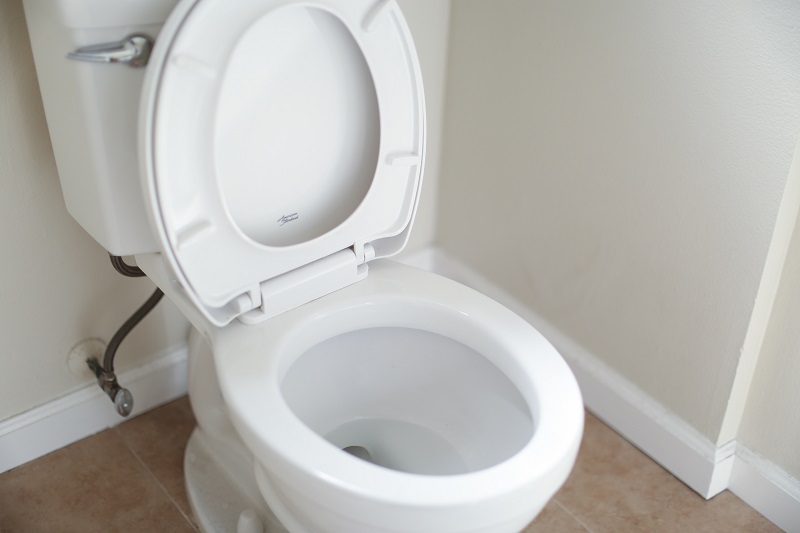That annoying black ring in the toilet bowl, usually lurking right at the water line, is more common than you think. Mold in toilets comes in other colors too – green or grey. Read on to find out what mold in toilet is and why it keeps showing up as well as how to clean it and prevent it from coming back!
Ring of Mold
That unwelcome black ring is mold, and the rule of thumb when you discover mold anywhere in your home or business is to remove it immediately. However, before you reach for your toilet bowl brush, read on to find out how to properly remove it. When disturbed, mold releases spores into the air, and even small amounts can be hazardous to your health.
Mold Growth
Mold relishes dark and moist environments. Both the toilet bowl and tank are almost constantly filled with water and kept dark by the lid of the tank and toilet bowl. And even if the toilet lid is kept open, airborne spores can easily take hold in toilet bowls. Mold thrives best in stagnant water, and toilets that are used infrequently and not flushed often are more likely to develop a problem with mold and mildew than those that are flushed more often. That is why you may see a more substantial black ring after returning from a few days away on vacation. Mold spores can grow and expand into a larger problem if toilets are not cleaned regularly.
Mold In Toilet Removal
The steps listed below will arm you with a plan for safely removing mold from the toilet. You will need rubber gloves, safety goggles and mask (optional), a spray bottle, a mild household cleaner, a toilet brush, bleach, and distilled vinegar. A toilet brush is ideal to protect your skin from chemicals. However, if you don’t have one, a rag will work.
Toilet Bowl
- Armed with rubber gloves, safety goggles and mask, and flush the toilet. Pouring a bucket of water down the toilet will often help lower the water level, exposing the mold ring to the air for better cleaning.
- Clean the toilet bowl using a toilet brush or rag and household cleaner. This should loosen the mold.
- Repeat steps 1 and 2 until there are no visible signs of remaining mold.
- Pour 1 cup of bleach into the filled toilet bowl and let it sit for 15-30 minutes. Then flush the toilet and clean the toilet bowl with either a diluted bleach solution of 1 cup bleach mixed with 1 gallon of water or a commercial disinfectant like the products listed here. Alternatively, you can mix 2 oz. (60 ml) borate (Borax) powder into 1 pint (475 ml) water. Borax is mildly abrasive but can be used on porcelain. Scrub with the toilet brush and flush again.
Toilet Tank
- Pour distilled vinegar into the tank and let it sit for 20-30 minutes. Bleach is not recommended as it can corrode metals and could affect plumbing components.
- Flush twice, scrubbing the inside of the tank between flushes if needed. Repeat until the mold is gone.
- It is important to clean all other parts of the toilet to create a sanitized environment. Toilet mold can be dispersed in water droplets that spray out of the bowl and onto surfaces during flushing. Spray the disinfectant or bleach solution on exterior surfaces of the toilet, including the entire seat of the toilet, and wait a few minutes before wiping thoroughly with a damp rag. Rinse out your rag and wipe all surfaces one more time with water (no cleaner). Use paper towels to dry all surfaces.
An Ounce of Prevention
Below are some tips to prevent mold in toilet from returning.
- Clean your entire bathroom on a weekly basis and use anti-fungal sprays regularly. Consider sprinkling borate in the toilet to keep mold in the toilet at bay. Borate can be found in Borax, which can be purchased at larger grocery chains or you may find it at dollar stores. Check the toilet tank for mold frequently.
- Reduce moisture in the bathroom by running fans before, during, and after showers and baths. If you don’t have a fan installed, open a window or keep a small dehumidifier in the bathroom. Ensure that surfaces remain dry.
- Repair all plumbing leaks as soon as possible. Not only will this help with mold prevention, it can save you money in the long run. Here is a simple test to determine if you have a leak in your toilet: add 2-3 drops of food-safe dye to the toilet tank and, after an hour or two has passed, check the water in the bowl. If you see colored water, you probably have a leak.
Prevent Mold in Toilet with Professional Help
Mold is a type of fungus that can grow on many kinds of surfaces, and most often appears when the surface is allowed to remain damp. Bathrooms are particularly susceptible to the growth of mold because moisture and humidity levels are usually high. Mold can grow on many different surfaces, including drywall. If you suspect excess lingering moisture or a larger mold problem in your bathroom, the only way to know for sure is to call a professional who can test for mold and moisture levels and assist you if a major issue is discovered.
Action 911 is a fully licensed general contractor with a team of professionals trained to handle mold testing and mold in toilet removal. It’s important that mold-infected areas are cleaned as soon as possible, so please don’t hesitate to contact us if you suspect a problem.

